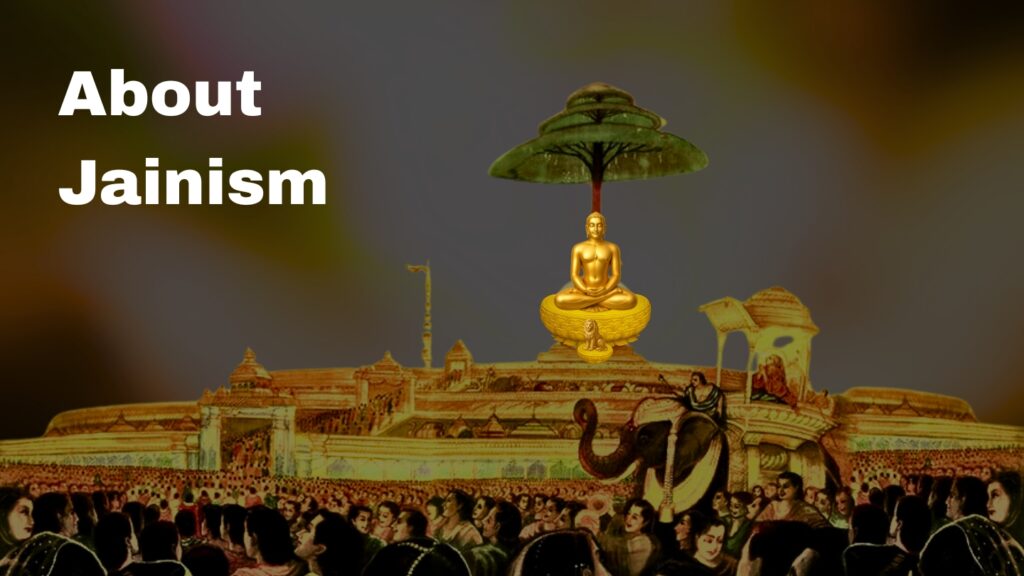
Episode 1
What Is Jainism?
The Religion of Eternal Truth
Words are few in this world, but their meanings are infinite.”
With this, we begin our new series “Gagar Ma Sagar” (An Ocean in a Pot) — and in Episode 1, we explore: What is Jainism?
Let’s start with a fact. Christianity makes up 31% of the global population. Islam 23%, atheists and secular groups 16%, Hindus 15%, Buddhists 7%, folk religions about 5.9%. All remaining religions fall within the remaining 1%. Jainism? It’s not even mentioned in these statistics.
Yet, Jainism’s impact on the world is profound. Some of the world’s top universities teach Jain philosophy. In many global institutions, not only is Jainism taught, but students also walk barefoot like Jain monks, perform hair-shedding rituals (locha) during internships, and receive certifications and degrees based on their understanding of Jain values.
Why such fascination with Jainism, especially after the recent pandemic?
Because the timeless principles of Jainism—set forth over 2,500 years ago—remain deeply relevant today. When asked by Ishan Gandhi (Gandhiji’s grandson) about Jainism, famous philosopher George Bernard Shaw responded:
“If I’m reborn, let it be into Jainism. That is my only wish.”
From great thinkers to curious children, there is a rising interest in understanding what Jainism really is.
What Is Religion? A Parable
Let’s understand religion through a story.
A man from China travels to India with his wife and child. As soon as he lands, his luggage is stolen—and in the chaos, he loses his wife and child too. With no money, phone, or family, he breaks down and rushes to the police station.
Despite CCTV checks and multiple attempts, nothing works. In desperation, the police suggest, “Take the name of God. Go to a temple. Maybe pray.”
He’s confused. “What is God? What is religion?”
But he goes anyway—from temple to mosque to church—but finds no answers, only silence.
Frustrated, he returns to the police. “Nothing is working!”
The police say, “Have faith.”
A kind passerby takes him to a Sadguru. The man shares his plight, “I just want to find my wife, child, and luggage. Can religion help?”
The Sadguru replies:
“Religion is not meant to find what’s lost. It helps you understand the truth.”
“If you do good, good will come to you. If you do wrong, you’ll suffer—perhaps from a past life or this one.”
The man admits he ran an unethical business exploiting widows and orphaned children.
He asks for forgiveness and guidance. The Sadguru says:
“If you want good for yourself, wish the same for everyone. If you desire peace, spread it. Good deeds will return good results.”
He immediately decides to stop exploiting the poor and helps those he wronged. Soon after, a stranger safely returns his wife and child to him. Everything falls into place once he starts doing good.
So, What Is Religion?
-
- Religion is not rituals.
-
- It’s not temples or prayers or festivals.
-
- It’s the virtues we live by—truth, non-violence, kindness, forgiveness, humility.
These are common across many religions. So why Jainism?
- It’s the virtues we live by—truth, non-violence, kindness, forgiveness, humility.
Why Jainism?
Because in Jainism, the foundation of all virtues is Satya (Truth).
Jain means one who has conquered attachment and aversion (Raag-Dwesh).
A Jain is someone who has destroyed all inner passions and desires. What remains is only truth—and that’s why Jainism is the religion of truth.
Other religions may describe how to marry, how to be buried, or how to perform rites.
Jainism talks beyond the body—it speaks of the soul.
While science seeks truth, it doesn’t recognize the soul—so it cannot answer everything.
Jainism begins with the soul and ends with the soul. That’s why it has the solutions to everything.
Anyone Can Be Jain
You don’t need to be born into Jainism to be Jain.
A compassionate elephant once thought, “No one should suffer.” He protected a rabbit from being crushed under his feet. That elephant was reborn as Meghkumar, attained Kevalgyan (absolute knowledge), and finally Moksha (liberation).
Not a monk. No spiritual teacher. Just a noble thought held until death—that’s Dharma.
Another Example
A sage named Tamli Tapasya practiced intense penance in the mountains for 60,000 years.
Even celestial beings came and said, “Come be our king in the heavens.”
But the sage replied,
“Why should I seek a throne when I already possess the supreme self?”
That alone made him Ekavatari (one birth away from liberation).
He had no guru, no religious knowledge—just the pure pursuit of truth.
Conclusion:
Religion is not about actions, but about the virtues we live by.
And Jainism is the path of the purest virtues—the truth of the soul.
Anyone, anywhere, can walk this path.
In the next episode, we will explore the core principles of Jainism. Stay tuned…
